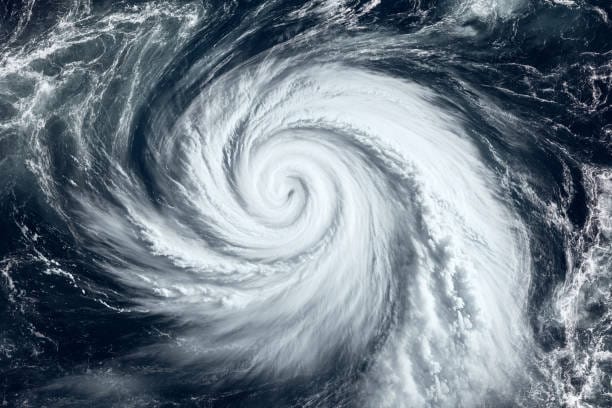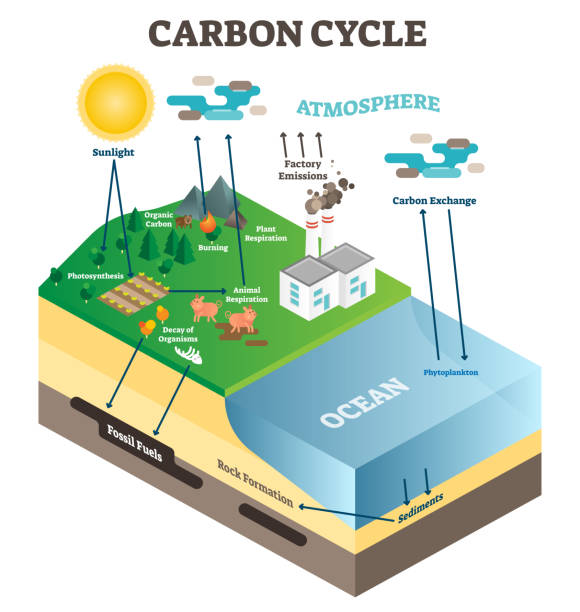In June 2023, the seas around northern Europe shimmered under a heat they had never felt before. The shallow waters of the North Sea and Celtic Sea—usually cool refuges for marine life—warmed by nearly three degrees Celsius above their usual June average. For sixteen long days, the oceans pulsed with a fever that stunned scientists, disrupted marine life, and hinted at a troubling new normal.
To many observers, this marine heat wave seemed sudden, shocking—an anomaly in nature’s steady rhythm. But as new research reveals, while the event was unprecedented, it was not unexpected. The findings, from scientists at the University of Exeter, the UK Met Office, and the Centre for Environment, Fisheries and Aquaculture Science (Cefas), paint a sobering picture: extreme marine heat events like this are becoming part of the climate’s evolving pattern, not its exception.
The Study That Sounded the Alarm
The research, published in Communications Earth & Environment, bears the unsettling title “Recent European Marine Heat Waves Are Unprecedented but Not Unexpected.” Led by Dr. Jamie Atkins during his doctoral work at Exeter, the study examined how rare the June 2023 heat wave truly was—and how rapidly such “rare” events are becoming ordinary.
Dr. Atkins, now at Utrecht University, summarized the urgency of the discovery: “Our findings show that marine heat waves are a problem now—not just a risk from future climate change.”
The message is clear: the ocean’s fever is no longer a distant forecast—it’s a diagnosis of the present.
When the Sea Turns Hot
Marine heat waves occur when sea surface temperatures rise significantly above the long-term average for an extended period. The June 2023 event saw waters around the British Isles soar to 2.9°C above normal—an enormous leap for an environment where even a one-degree change can reshape entire ecosystems.
While these figures might seem abstract, their meaning is visceral. Marine life is exquisitely tuned to temperature. The sudden warmth altered the growth of phytoplankton—the microscopic plants at the base of the marine food web—disrupting their normal bloom cycles. These organisms are essential, not only because they feed countless sea creatures but because they produce much of the oxygen we breathe and help regulate the planet’s carbon balance.
When phytoplankton struggle, the effects cascade. Fish populations shift or decline, seabirds lose food sources, and shellfish suffer stress or die-offs. Warmer water also fosters harmful bacteria and algal blooms that can contaminate seafood and threaten human health. The seas, usually a symbol of balance and endurance, become fragile and unpredictable.
A Changing Probability: From Rare to Routine
The Exeter-led team used extensive climate model simulations to quantify just how extraordinary the June 2023 event was—and how likely similar heat waves are to occur in the near future.
Their results reveal a profound transformation in oceanic stability. In the Celtic Sea, off Ireland’s southern coast, the annual chance of a heat wave on this scale has jumped from 3.8% in 1993 to nearly 14% today. In the central North Sea, the probability rose from less than 1% to almost 10% in just three decades.
What this means is that a marine heat wave of the magnitude seen in June 2023, once expected perhaps once in a lifetime, now has about a one-in-ten chance of happening every single year. The ocean’s statistical future is becoming its lived reality.
Professor Adam Scaife, a co-author of the study and Head of Long Range Forecasting at the UK Met Office, captured the significance succinctly: “This is another example of how steady climate warming is leading to an exponential increase in the occurrence of extreme events.”
The Sea’s Heat and the Sky’s Response
The ocean does not exist in isolation from the air above it. As Dr. Atkins explains, “Warmer seas provide a source of heat off the coast, contributing to higher temperatures on land. Additionally, warmer air carries more moisture—and when that cools, it leads to increased rainfall.”
Indeed, during the June 2023 event, the overheated seas contributed to record-breaking land temperatures and unusually heavy rainfall across the British Isles. The ocean’s warmth became the atmosphere’s energy, fueling weather extremes that disrupted not just ecosystems, but everyday life—agriculture, infrastructure, and human health.
In a sense, the ocean was whispering a warning to the land: what happens beneath the waves never stays there.
The Human Connection
Marine heat waves may seem remote compared to wildfires or droughts, but they shape the world far more intimately than many realize. A warmer ocean alters the abundance of fish that sustain millions of people. It affects the livelihoods of coastal communities, the stability of weather patterns, and even the chemistry of the air we breathe.
In northern Europe, fisheries and aquaculture industries rely on predictable marine conditions. When those conditions shift suddenly, entire economic systems tremble. The 2023 event reminded policymakers and citizens alike that climate change is not an abstract global issue—it’s local, immediate, and deeply human.
The Hidden Machinery of Climate Change
To understand why these heat waves are becoming more common, scientists look to the steady accumulation of greenhouse gases in the atmosphere. Human activities—burning fossil fuels, deforestation, industrial emissions—trap heat that would otherwise escape into space. The oceans absorb most of this excess warmth, acting as Earth’s vast thermal buffer.
But that buffer has limits. The more heat the seas absorb, the more their balance shifts. Surface temperatures rise, circulation patterns change, and ecosystems struggle to adapt. Because water retains heat far longer than air, the impacts of ocean warming persist for decades or centuries.
In effect, every degree of warming in the ocean represents an enormous reservoir of stored energy—a silent force shaping weather, biodiversity, and human fate.
A Future Written in Temperature
The June 2023 event was not an isolated spike; it was a symptom of an accelerating trend. Across the globe, marine heat waves are becoming longer, more intense, and more widespread. Coral reefs bleach, kelp forests vanish, and fish migrate to cooler waters. The rhythm of the ocean—the invisible heartbeat of the planet—is changing.
Yet within this unsettling reality lies a call to action. The research underscores that climate change is not waiting for the future—it is unfolding in real time. Understanding it, and responding wisely, is no longer a choice but a necessity.
Listening to the Ocean’s Warnings
The scientists behind the study emphasize the need for continued observation and research. More data on the impacts of marine heat waves in Europe’s shelf seas—those shallow regions that support much of its marine biodiversity—are urgently required. Understanding how these events affect plankton, fish stocks, and ecosystem health will be essential for crafting policies that protect both nature and livelihoods.
Technological advances now allow scientists to monitor the ocean with unprecedented precision: satellite imaging, underwater sensors, autonomous drones, and computer models track the shifting patterns of heat and life. But the challenge is not only technical—it is moral and political. Humanity must decide whether to heed what the data is clearly saying.
Hope in Understanding
Despite the gravity of the findings, there is a quiet optimism in the act of discovery itself. Every study like this one brings clarity where there was once confusion. Each new insight helps societies prepare, adapt, and mitigate. Awareness, after all, is the first form of resilience.
And biology, oceanography, and climate science together remind us that the living world is interconnected—and still capable of healing, if given the chance. Reducing emissions, protecting ecosystems, and investing in sustainable marine management can slow the pace of warming and preserve the seas that sustain us.
The Sea’s Silent Cry
The June 2023 marine heat wave may be remembered as a turning point—a moment when Europe’s seas revealed just how vulnerable, and vital, they are. For sixteen days, the waters burned with unnatural warmth, sending ripples through ecosystems and headlines alike. But the greater story is not one of despair; it is one of awakening.
The ocean is no longer whispering its warnings—it is speaking in heat, in storm, in the altered pulse of life itself. To listen is to understand that our fate and the ocean’s are one and the same.
The seas around Britain and northern Europe have always shaped history—through trade, exploration, and culture. Now, they shape our future in a different way: as a living reminder that climate change is not coming—it is here.
And yet, if the story of the June 2023 heat wave teaches us anything, it is that understanding gives us power. Knowledge, empathy, and action can still turn the tide. The oceans, though wounded, remain vast, resilient, and full of life. The question now is whether we will answer their call before it is too late.
More information: Recent European marine heatwaves are unprecedented but not unexpected, Communications Earth & Environment (2025). DOI: 10.1038/s43247-025-02802-3






